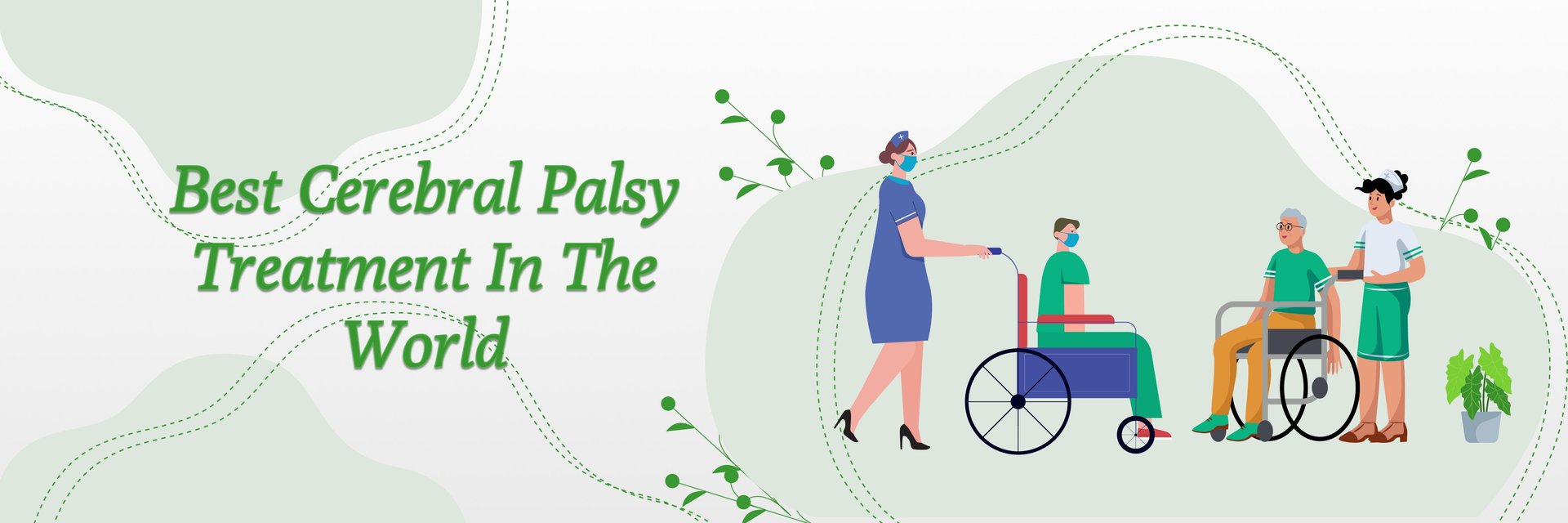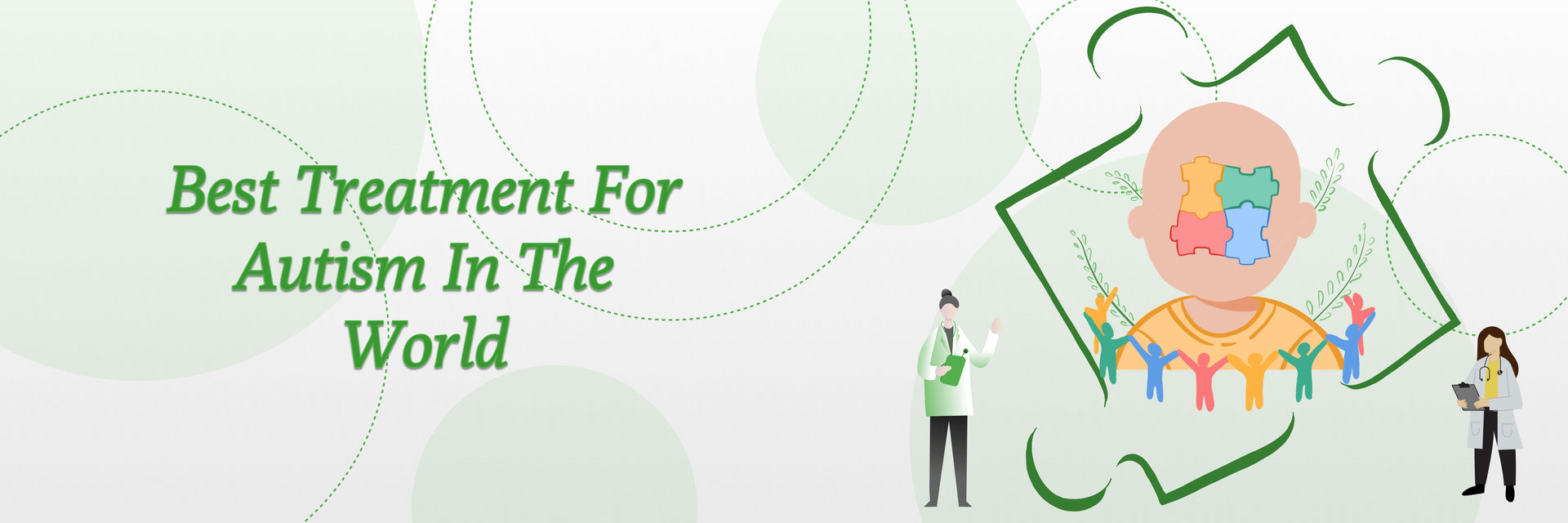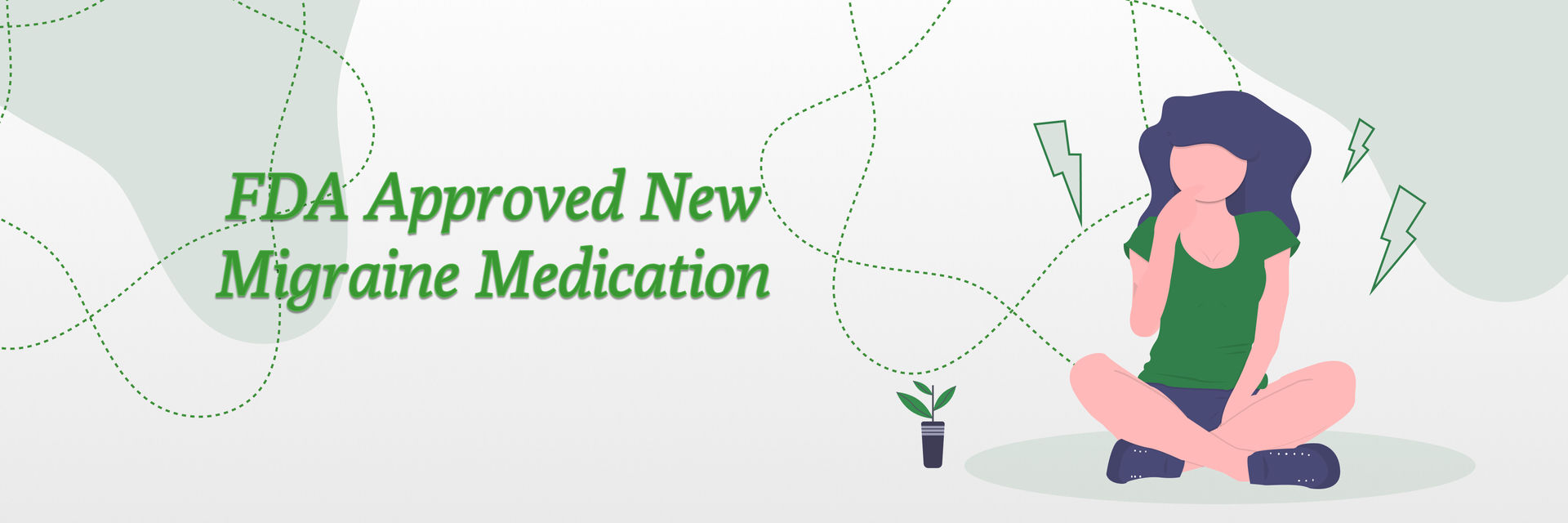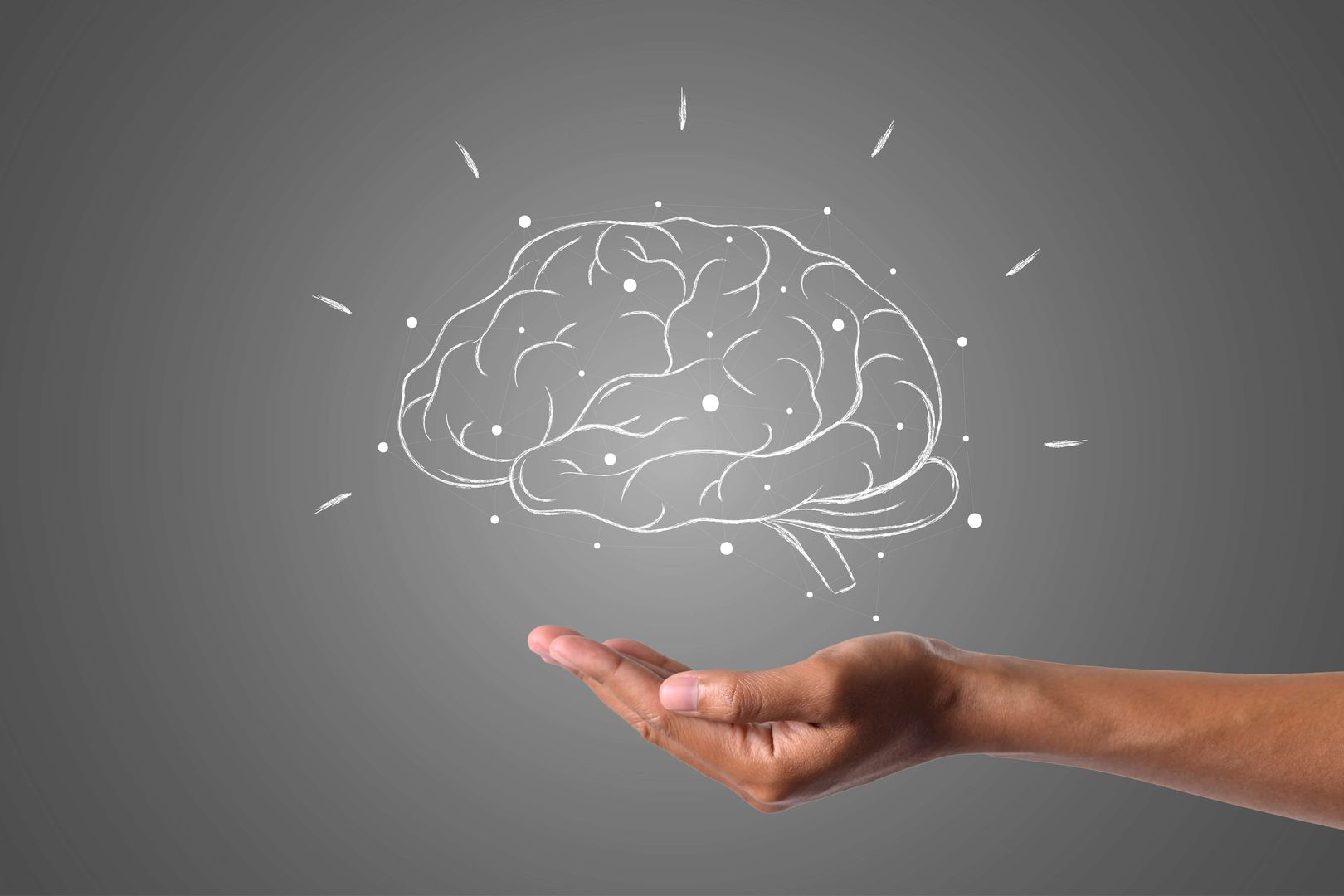Overview
Stem Cell Therapy for Spinal Stenosis offers a promising new approach to treating this debilitating spinal condition. By harnessing the regenerative power of stem cells, this therapy aims to repair damaged tissues and alleviate pain. It's a cutting-edge treatment option, providing new hope for those suffering from spinal stenosis. With Stem Cell Therapy for Spinal Stenosis, patients now have an innovative and potentially more effective way to manage their spinal health.
Do you know?
Spinal stenosis affects 1 out of 20 adults over 50 in the US alone.
Spinal stenosis is the narrowing of the spinal canal, which puts pressure on the spinal cord and the nerves of the spine.
The two main types of this condition are cervical and lumbar spinal stenosis. In other words, the neck and lower back regions are mostly affected.
Common Symptoms and Signs

- Pain in the back or neck: Can be intermittent or constant.
- Numbness, weakness, or tingling: Often occurs in the arms or legs.
- Difficulty walking or balance problems: Caused by pressure on the spinal cord.
- Symptoms worsening over time: Generally, these symptoms gradually worsen.
Causes of Spinal Stenosis
This condition can be caused by several issues like:
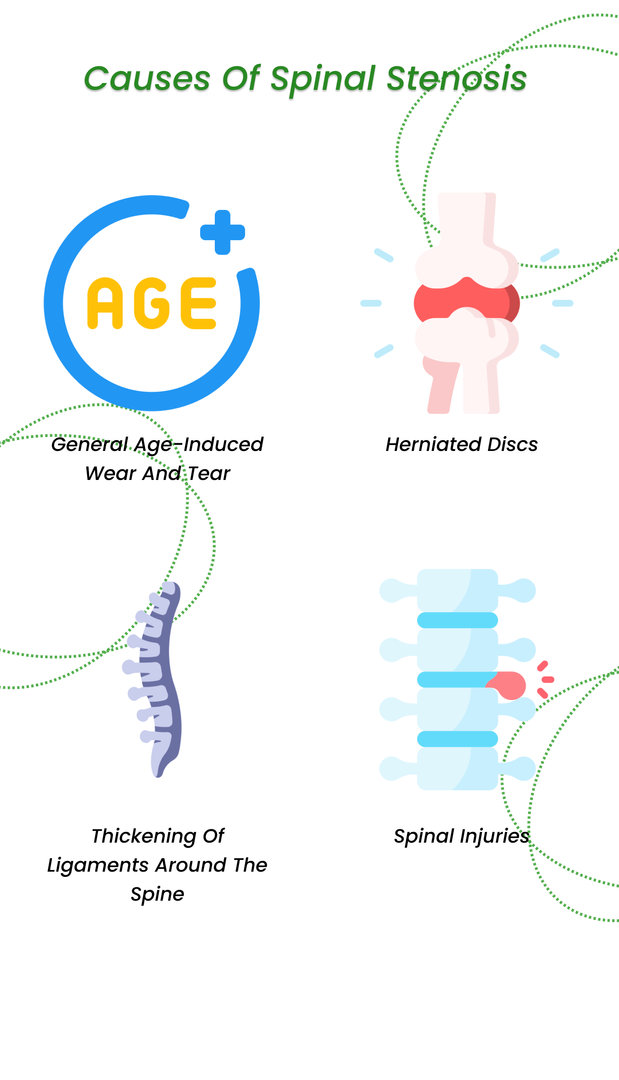
Uncover the root causes of Spinal Stenosis and prioritize your health. Don't delay – book your appointment now for a healthier future.
- General age-induced wear and tear
- Herniated discs
- Thickening of ligaments around the spine
- Spinal injuries
Patients with spinal stenosis usually present with pain, tingling or numbness, muscle weakness, and impaired bladder or bowel control.
How is spinal stenosis diagnosed?

Diagnosing spinal stenosis involves a combination of clinical evaluation, imaging studies, and diagnostic tests:
- Medical History and Physical Examination: A thorough history and physical examination are the first steps in diagnosing spinal stenosis.
- X-Rays: X-rays can reveal changes in the spine, such as bone spurs or narrowing of the spinal canal.
- Magnetic Resonance Imaging (MRI): MRI provides detailed images of the spinal cord, nerves, and soft tissues, helping to pinpoint the exact location and cause of stenosis.
- Computed Tomography (CT) Scan: CT scans offer cross-sectional images of the spine, which can be useful in diagnosing spinal stenosis.
- Electromyography (EMG): EMG tests the electrical activity of muscles and nerves to determine if nerve compression is present.
What can stem cell therapy do to treat spinal stenosis?
Well, stem cells can repair the damage to the injured or worn-out spinal tissue, providing long-term pain relief to the patient.
It’s time to answer one of the most critical questions first.
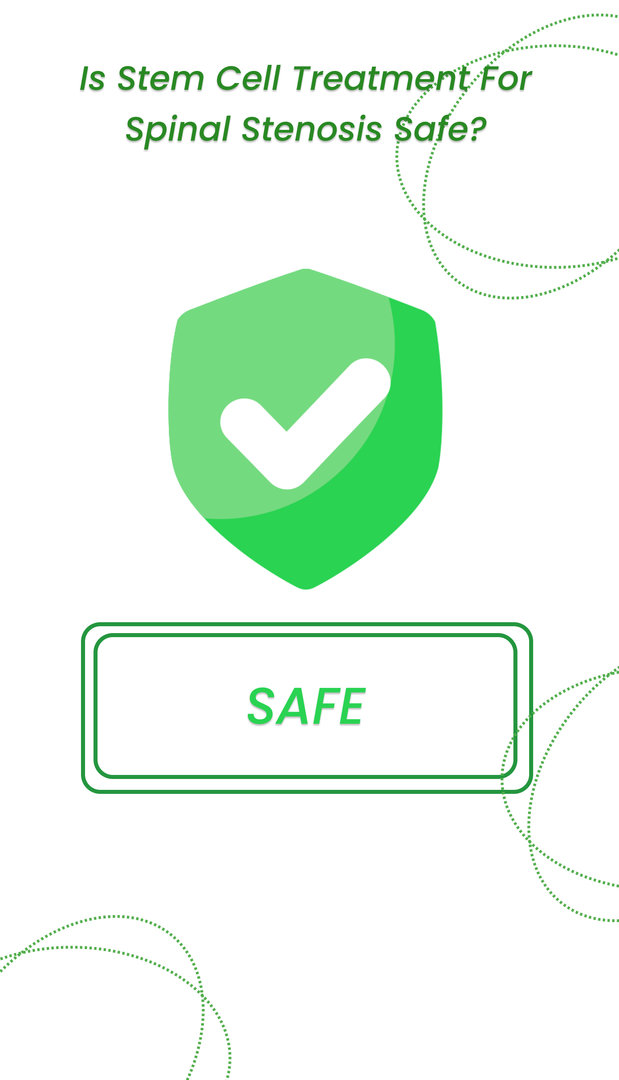
Stem cell treatment for spinal stenosis is a fairly new treatment.
Due to this reason, it is not yet FDA-approved. However, clinical trials have been going on for nearly a decade. You will be glad to hear that no long-term side effects have been reported by any study so far.
So, in a nutshell, yes, this treatment is safe.
Does Stem Cell Therapy Work for Spinal Stenosis?
The short answer is yes, it works.
To explain more, let’s talk about just how it works.
But first, let’s understand what a stem cell is.

Stem cells are immature cells found in our bodies, that can differentiate into any tissue. In adults, these stem cells are generally harvested from the bone marrow or the fatty tissue of the abdomen.
Since nearly all of us have these stem cells, most transplants are autologous, where the patient’s stem cells are used.
So how do stem cells treat spinal stenosis?
Stem cells have several useful properties.
- Regeneration: By repairing and replacing the damaged spinal tissue, stem cells help treat spinal stenosis.
- Anti-inflammatory properties: This further helps reduce chronic pain.
- Neurotrophic properties: This means they can form new nerve endings and eliminate muscle weakness as well.
As we have seen from the above explanation, scientists have found a way to use stem cells to successfully treat spinal stenosis.
Benefits of stem cells in treating Spinal Stenosis
Let’s talk a little more about the benefits of stem cells in treating spinal stenosis.

Explore the potential of stem cells in treating Spinal Stenosis and seize control of your health. Reach out to us today to embark on a path to a better life!
Eligibility Criteria for Stem Cell Therapy for Spinal Stenosis

Not all patients with spinal stenosis are candidates for stem cell therapy. Eligibility depends on several factors, including:
- Severity of Stenosis: Stem cell therapy is often recommended for patients with moderate spinal stenosis who have not responded to conventional treatments.
- Overall Health: Patients should be in good overall health, as certain medical conditions may contraindicate stem cell therapy.
- Age: While there is no strict age limit, younger patients with mild to moderate stenosis may respond better to stem cell therapy.
- Previous Treatments: Patients who have undergone multiple spinal surgeries or who have advanced stenosis may not be ideal candidates for stem cell therapy.
- Expectations: Patients should have realistic expectations about the potential outcomes of stem cell therapy, understanding that results can vary.
Stem Cell Therapy for Different Types of Spinal Stenosis
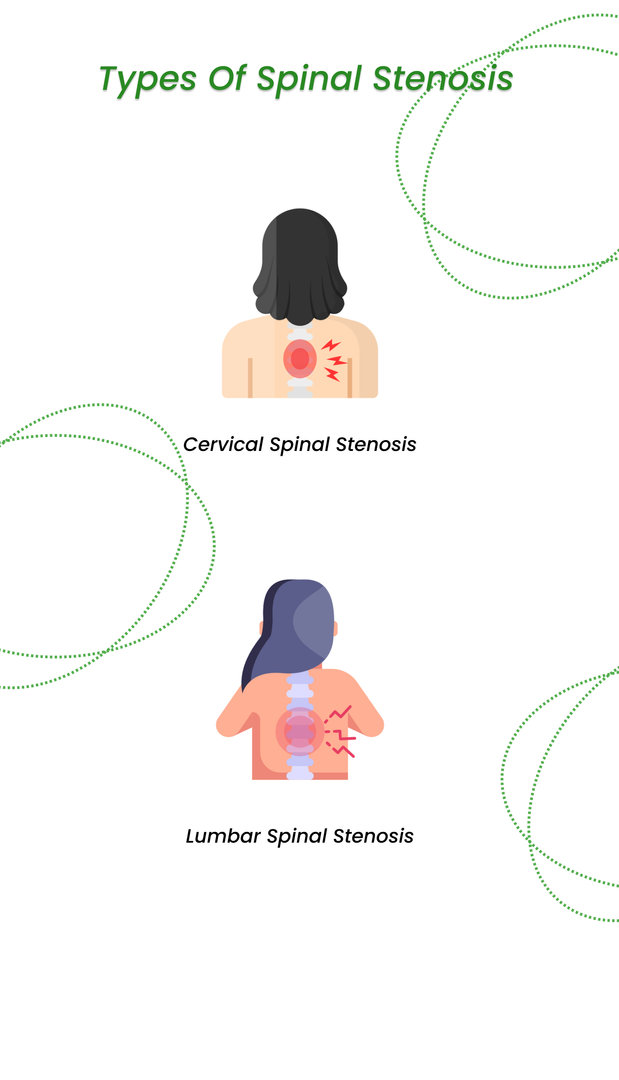
| Stem Cell Therapy for Cervical Spinal Stenosis |
|
| Stem Cell Therapy for Lumbar Spinal Stenosis |
|
Procedure of Stem Cell Therapy for Spinal Stenosis
The procedure for stem cell therapy in spinal stenosis typically involves several steps:
- Harvesting: Stem cells are usually harvested from the patient's bone marrow or adipose tissue through a minimally invasive procedure.
- Processing: The harvested stem cells are processed and concentrated in a laboratory to increase their therapeutic potential.
- Injection: The concentrated stem cells are then injected into the affected area of the spine under imaging guidance to ensure accurate placement.
- Post-Procedure Care: After the injection, patients are monitored and may require a short period of rest and activity modification. Physical therapy may also be recommended to enhance recovery.
Issues like lower back pain and loss of bowel or bladder control underscore lumbar spinal stenosis
Delve into the procedure of Stem Cell Therapy for Spinal Stenosis and initiate your journey to recovery. Take the first step – contact us today for your personalized treatment.
What to Expect After Stem Cell Therapy for Spinal Stenosis?
After undergoing stem cell therapy, patients can expect a gradual improvement in symptoms over the following weeks to months. The key aspects of the post-therapy period include:
- Initial Recovery: Most patients experience some soreness or discomfort at the injection site, which typically resolves within a few days.
- Gradual Improvement: Pain relief and functional improvements often occur gradually as the stem cells begin to repair damaged tissues.
- Physical Therapy: Engaging in physical therapy can help enhance the effects of stem cell therapy, improving mobility and strength.
- Follow-Up Appointments: Regular follow-up visits with the healthcare provider are important to monitor progress and make any necessary adjustments to the treatment plan.
- If donor stem cells are used, graft-versus-host disease might occur

Are you wondering if you need to wait for months to see visible results?
You don’t.
Most patients show visible improvement three to four weeks after the procedure.
Here’s what you can expect:
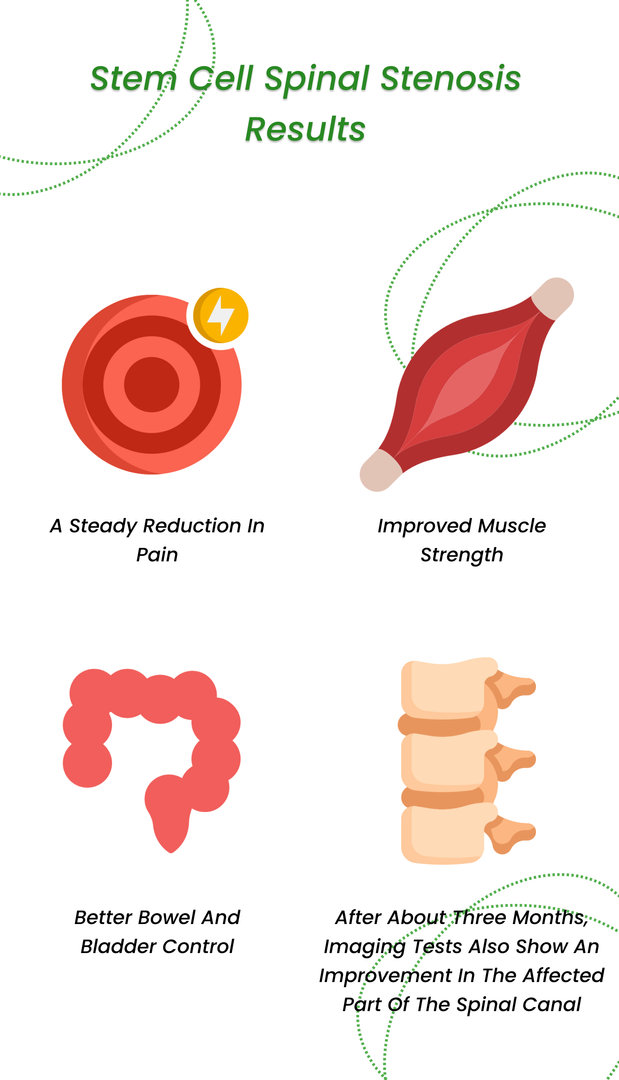
Your body will continue producing new healthy cells for almost one year after the procedure.
While more studies are needed to see how patients fare several years after stem cell therapy, we already know they require much less medication and therapy even one year after the procedure.
Success Rates of Stem Cell Therapy for Spinal Stenosis
A 2017 study using bone marrow-derived stem cells reported a 70% improvement in pain scores one year after treatment.
A 2020 study employing adipose-derived stem cells showed a 60% improvement in functional scores two years after the procedure.
The success rate of stem cell therapy can depend on several factors:
- The severity of the spinal stenosis
- The medical history of the patient
- The type of stem cells used
- The location of the stenosis
Clinical studies and patient testimonials suggest that many individuals experience significant pain relief and functional improvement following stem cell therapy. However, it's important to note that results can vary. Most importantly, it has yet to be widely experienced, and not all patients may achieve the same level of benefit.
Yes, you read that right!
Stem Cell Therapy for Spinal Stenosis Cost
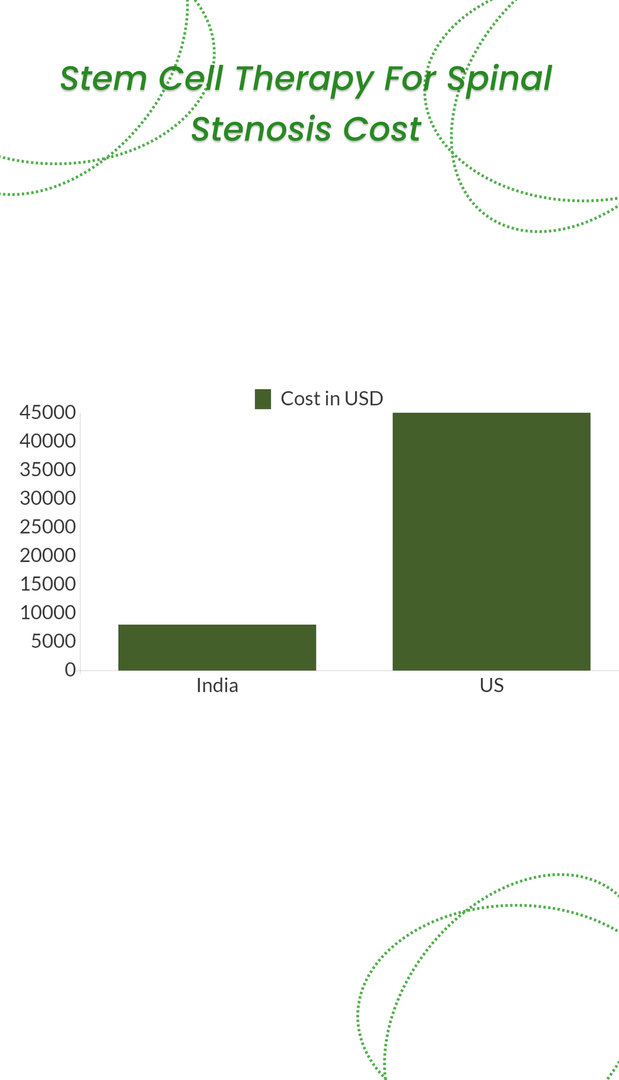
The cost of spinal stenosis stem cell therapy depends on your chosen facility, the source and type of stem cells used, and the number of stem cells required.
In India, this procedure costs 8000 to 12000 USD, including hospital stays. The same procedure costs 15,000 to 45,000 USD in the US.
It is important to note here that the cost of stem cell therapy is not yet covered under medical insurance, as the procedure is not FDA-approved.
Present and Future Scope and Challenges of Stem Cell for Spinal Stenosis
Stem cell therapy has come a long way over the past ten years. Yes, certain challenges still exist.
As a paper by Daisuke Sakai and Gunnar B.J. Andersson, which was published in the Nature Reviews Rheumatology journal, points out, researchers still must figure out why this treatment doesn’t work as well in chronic cases.
Despite this, stem cell therapy is well on its way to becoming a conventional medical treatment for spinal stenosis and giving predictable results.
Do you believe stem cell therapy could be the treatment you were looking for?
Did you answer a yes?
Reference:
https://www.nature.com


